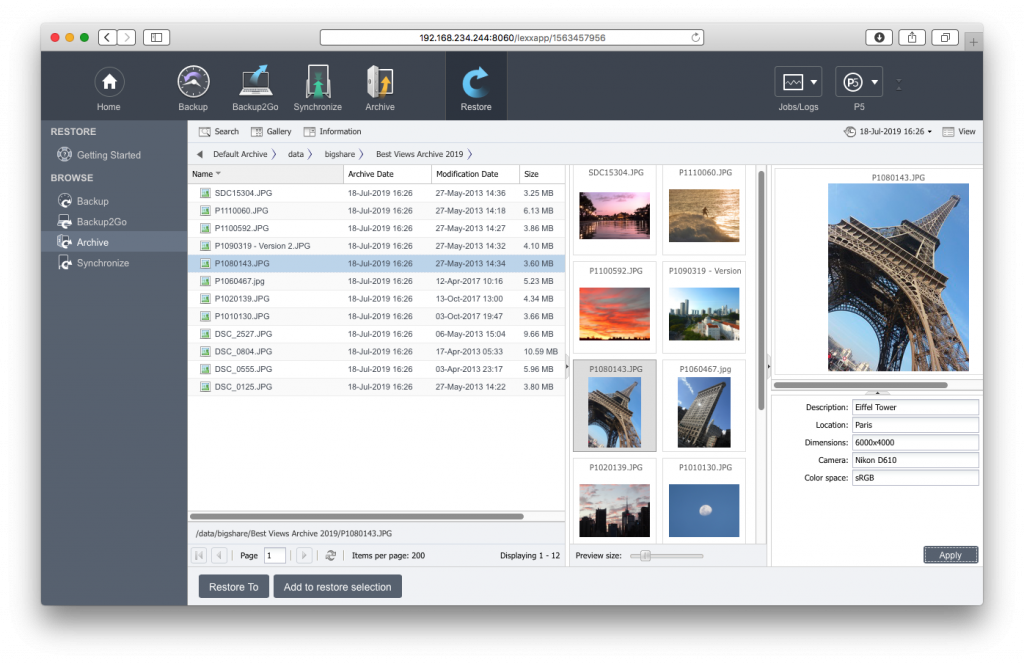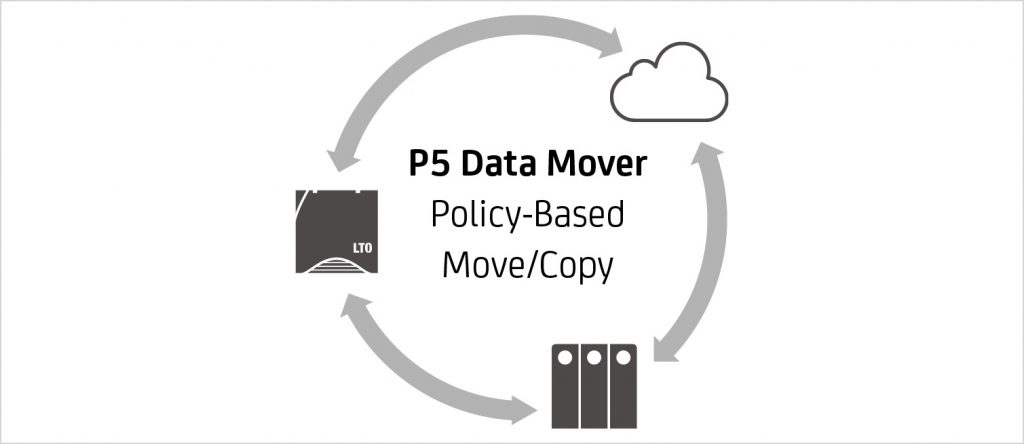
by Marc M. Batschkus
Why archive data in the first place?
Since archiving is a migration process, it moves files from production storage to archive storage. Saving space on production storage saves investment and keeps the number of files on a reasonable level, reducing risks, and increasing efficiency.
The archive preserves files for the long term and creates a file memory of the company. This, in turn, makes referencing and re-use of files extremely easy. Projects of returning customers are found easily. Any form of re-purposing and monetization becomes easier. An archive synonym, therefore, is data preservation.
This begs the question, what is the best way to archive video files?
In this article, we will explain how to best archive your video files, and media to increase efficiency and reduce risk. For a discussion on how to protect video storage, look here.
5 Different Ways to Archive Video Files
An archive works differently from a backup. A backup protects ongoing production by keeping a copy of all files. Where a backup overwrites itself after a specified retention time is reached, an archive is usually forever growing. If the archive is for Mac, Windows, Linux or popular NAS platforms like QNAP and Synology, NetGear and FreeNAS/TrueNAS, P5 runs on all those platforms. The video or media archive is the place where all media come together independent of being digitized film, video, photos, audio or projects. The production workflow ends with the media archive where all finalized files move to. It should be mentioned that there are other approaches possible like an ingest archive that keeps all raw footage before and during editing to reduce the load on the production storage that only holds the proxies.
An archive is planned for years or decades to operate and therefore needs additional information, like metadata, to locate files.
Metadata can either be technical like camera type, lens, and focal length; or descriptive, like who is visible in the video. Additionally, P5 Archive displays thumbnails of media and proxy clips for visual browsing.
So, let’s look at what the best way to archive video files is.
Method #1: Archive to LTO tape
Videotape has been part of workflows for a very long time. With the move to tapeless processes, data management has a central role in production.
Re-introducing tape as a medium might sound counter-intuitive at first. Though, LTO tape is very different from any videotape. Multiple layers of security like error correction, read-after-write, servo tracks, air gap, etc. assure the data integrity. Shelf life of 30 years adds a long-term perspective. The long-term perspective is of importance, particularly to archive film. A film that is worth digitizing will be kept for decades usually. Of course thi sis also the case for many digital media and video.
Those are the reasons why many large corporations and financial institutions rely on tape for long-term storage.
Tape speeds scale with the number of drives in a tape library with each drive reaching up to 360MB/s. Multiple drives also offer multiple jobs to be running simultaneously for either backup, archive, or restore.
As a result, LTO tape is the most affordable option for long-term archives. An initial investment in hardware and software is needed, and ongoing operation on premises assures access but also needs resources. All things considered, for many cases, LTO tape is the best way to archive video files. P5 Archive is an archive software that supports single LTO drives as well as tape libraries of all vendors.
Method #2: Archive to the Cloud
Since Cloud storage options have become more diversified, there are services for almost any budget.
Saving files for long-term to Cloud storage has several specific advantages.
There is no need for investment in archive hardware. Starting an archive can be a matter of minutes. Since the Cloud vendor takes care of redundancy and data protection, there is no need to clone archive data for security reasons.
P5 Archive catalogs assets independently of the archive storage being used, disk, tape, or Cloud. Additionally, P5 Archive offers the option of a completely cloud-based archive. P5 is available in the AWS marketplace and can run in the cloud. P5´s flexibility allows even to use other cloud vendors’ storage.

Savings in initial investment for hardware can be big. Over the long run, the cost of Cloud storage adds up.
Depending on the focus, the OPEX versus CAPEX perspective can favour Cloud storage over on-premise solutions. Other limitations are available bandwidth for access and possible lock-in with a Cloud vendor.
Method #3: Archive to Disk
If the timeframe for the archive is limited to only some years or if the number of users and accesses is very high, archive to disk might be the best option.
Calculating and comparing cost over multiple years to alternatives like tape and cloud might help find the most economical solution.
Careful monitoring and maintenance are required for large disk systems to replace disks and ensure data integrity.
Downsides are a relatively higher cost for expansion, power, cooling, and operations.
Method #4: Hybrid solution and Cloned Media
If local access and storage are required, an offsite copy of the archive is needed for maximum security. This can be facilitated either by cloning disk or tape storage and moving the cloned data sets offsite or by using local storage together with the Cloud.
This combination can be the best of both worlds, combining the strength of local and Cloud storage. Since local storage is not replaced by Cloud storage, additional costs need to be covered.
Method #5: Archive Everything
Alongside video clips, any photos, graphics, and sound files should be put in a video archive. The best way to archive video files is to include even production notes, plans, and documents. All additional information can be helpful when reconstructing production years later. There might have been 3rd party tools, plugins, and specific settings in use that might not be obvious and contributed significantly.
Additionally, it is possible that certain features and tools might not be available anymore. Older files might miss the necessary application or tool to use them.
Dependency on specific OS versions and editing suites adds to the complications.
For this reason, it makes sense to archive a complete workstation by putting it away when it is replaced by a newer one. This way, all previous conditions, settings, and tools are available with minimum effort and in identical fashion.
Taking care that everything in terms of hardware and software is archived that was used during production ensures maximum compatibility and universal access.
Whether the required cost, space, and maintenance are worth the effort depends on the assets and how important access and re-creation of production and environment might be.

P5 Archive offers a unique option for maximum flexibility of the media archive, the P5 Data Mover. The P5 Data Mover offers policy-based moving and copying of archived data between tape, disk and cloud. This HSM-like extension offers flexibility for any storage strategy and makes the archive future-proof. Data can easily be migrated or copied between storage tiers. This way, users can automatically move data from hot storage to cold storage in any direction they need to accommodate any future requirements.

Discover More: www.archiware.com/products/p5-data-mover
To find the best way to archive video footage needs a closer look at the individual situation, requirements, workflow and budget. In any case, metadata is important to find files later. The archive software P5 Archive offers customizable metadata fields. P5 Archive allows to change the storage strategy and migrate from one storage to another. Features that help you increase efficiency with your video archive workflow are discussed in this post:
